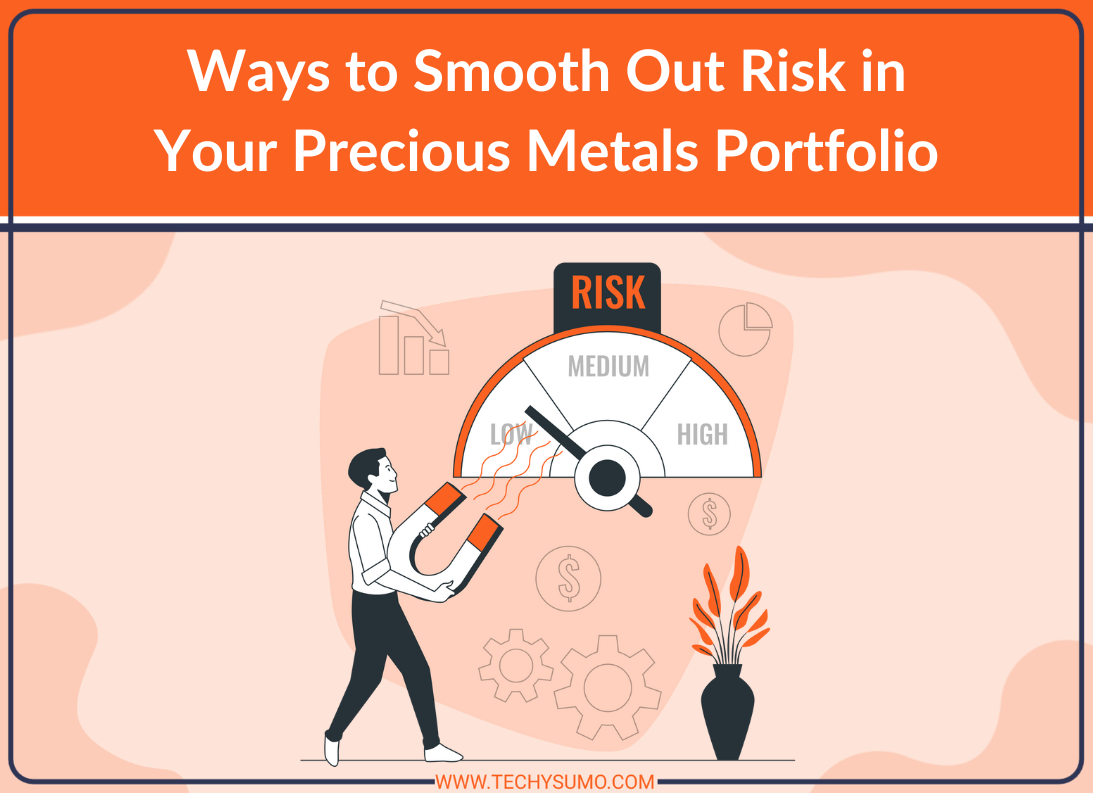Investing in precious metals has long been considered a safe haven during times of economic uncertainty. Gold, silver, platinum, rhodium, and palladium each offer unique opportunities, but they also come with distinct risk profiles. Whether you are a seasoned investor or just beginning to diversify your portfolio with tangible assets, managing that risk is essential for long-term success.
This article explores practical and strategic ways to reduce volatility and enhance stability within a precious metals investment portfolio, helping investors make more informed and confident decisions.
Table of Contents
Choose a Balanced Mix of Precious Metals
The first way to smooth out risk is to avoid over-reliance on a single metal. Each metal carries a unique risk-return tradeoff. Gold is traditionally the most stable and widely held, often used as a hedge against inflation. Silver, though similar, has greater industrial demand, making it more volatile. Platinum and palladium prices fluctuate based on automotive and manufacturing cycles. Rhodium can deliver high returns, but with extreme price swings and limited market liquidity.
By spreading your investment across various metals, you reduce the chances of any one underperforming asset dragging down your entire portfolio.
Adjust Allocations in Response to Market Conditions
Not all economic conditions affect precious metals in the same way. For example, during periods of high inflation or geopolitical instability, gold tends to perform well. In contrast, industrial metals like platinum and palladium often thrive in periods of economic expansion and manufacturing growth.
Also Read
Being attentive to macroeconomic indicators—such as interest rates, GDP trends, or industrial output—can help you fine-tune your portfolio and reduce exposure to metals that may underperform in certain climates.
Diversify Within Physical and Paper Assets
A common way to manage risk is to combine physical holdings (such as coins and bars) with paper-based instruments like ETFs, futures contracts, or precious metals IRAs. While physical metals offer tangibility and protection against systemic risk, financial instruments provide liquidity and flexibility.
A well-structured portfolio may contain both forms, allowing you to weather short-term market turbulence while preserving long-term value.
Manage Storage, Liquidity, and Access Risks
Holding physical metals presents logistical challenges. Storage, insurance, and resale processes can all influence overall returns. For instance, gold and silver are widely traded and easy to liquidate, while rhodium may require a specialist broker. Working with an experienced investment partner or custodian can help reduce operational risks and provide more flexibility to balance your physical metals portfolio as your financial goals or market conditions change.
Use Dollar-Cost Averaging and Set Allocation Limits
Two disciplined investment approaches can further reduce risk:
- Dollar-cost averaging involves making regular purchases at set intervals, regardless of price. This approach smooths out the impact of market volatility over time.
- Allocation limits help prevent overexposure to any single metal. Setting predefined thresholds—such as no more than 40% in gold or 15% in high-volatility assets like rhodium—can maintain balance and preserve capital.
These methods encourage a long-term mindset and reduce the temptation to react emotionally to market swings.
Stay Informed and Take a Long-Term View
The most successful investors in precious metals are those who remain informed about global economic indicators, monetary policy, and industrial trends. Regularly reviewing trusted financial news and commodity reports can help anticipate market shifts.
Above all, precious metals should be viewed as a long-term store of value, not a get-rich-quick scheme. By understanding their role in the broader financial ecosystem and applying disciplined risk management, you can build a resilient and rewarding portfolio.






